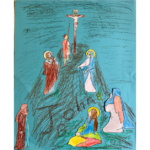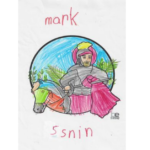
In the early 16th century the practices and doctrine of the Catholic Church were challenged. This resulted in a separation of a group of Christians, later known as Protestants, from the Catholic Church. They grew in number, with their beliefs becoming widespread around central Europe especially in Germany where the dissension had all started.
In 1545, Pope Paul III, called for a Council of the Church to convene at Trent in Italy. Later, this council became known as the Council of Trent. The Cardinals and Bishops were called to address the issues being faced by the Church, especially to confirm the fundamental beliefs of the Catholic Faith and to discuss the “lived-world” situation of the Church.
It was St. Peter Canisius who became a focal personality in the endeavour of the Church to spread the teachings of the Council of Trent in the attempt to clarify the “doctrinal confusion” of the time.
He was born in Nijmegen, Holland, in May 152, as Peter Kanis, later given a Latin version of his name as Canisius. His mother Aegidia died soon after his birth. His father Jacob was a public official and quite wealthy. Peter was highly intelligent, obtaining a master’s degree from Cologne University, before he was 20. His father wanted him to marry but Peter joined the Society of Jesus (Jesuits) and was ordained priest in 1546.
Just a year after, Peter accompanied the Bishop of Augsburg, as a theological adviser, to the Council of Trent. After spending some time in Italy working with St. Ignatius of Loyola, he went to Bavaria where as a University Professor, a catechist, and a preacher, he became a promoter of the doctrinal truths declared by the Council of Trent. He travelled to Vienna, Prague, Munich, combining pastoral work with his academic expertise, setting up Jesuit schools, colleges and Universities. What was of great importance was the fact that he was capable of imparting the Council’s Decrees on a “popular level”, addressing large crowds. As a result there was a revival of the Catholic Faith in Germany where he became the first Jesuit Provincial. At one point, while in Vienna, he refused the offer to be ordained a bishop after his high academic stance did not keep him from caring for the sick and dying during a plague outbreak.
St. Peter Canisius founded 18 colleges and wrote 37 books but he continues to be remembered for compiling the ‘first and longest version’ of the Catholic Catechism, together with two shorter versions, always with the sole aim of strengthening Catholic beliefs especially in his discussions, especially with the Protestants.
In 1584, after a mystical experience, he decided to remain in Switzerland for the remainder of his life, continuing with his writing, teaching and preaching. Even after suffering a strong stroke, on his recovery, he continued with his writings with the help and support of his secretary until his death on the 21st December 1597.












